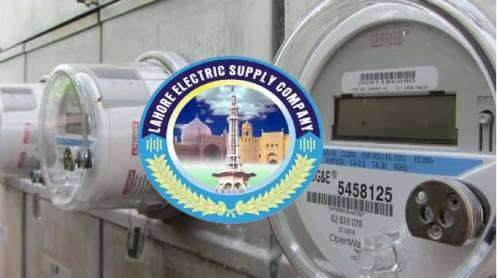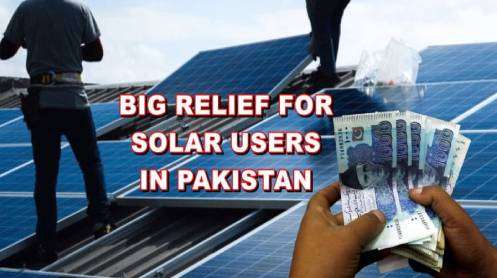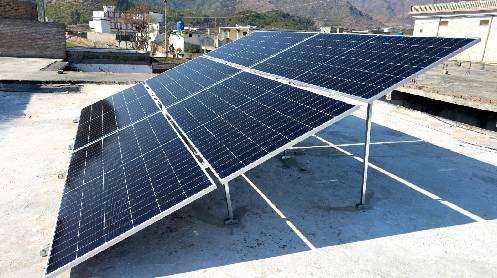CEO K-Electric Moonis Alvi stated that renewable energy has to be integrated into the power sector in a way that adds versatility to the system, calling a resilient power network the “backbone of a resilient city.
These comments were made while addressing a global virtual audience at the Future of Energy webinar titled “Strengthening Climate Action: Role of the Power Sector,” which also featured prominent thought leaders and industry experts including Malik Amin Aslam, Minister for Climate Change and Special Assistant to Prime Minister on Climate.
The panel discussion was curated to gather insights on the opportunities and bottlenecks of Pakistan’s ambitious plans to increase the share of renewable energy in its generation mix. Ranked as the 8th most vulnerable country to the impact of climate change, Pakistan’s industries and power sector have an important role to play in exacting a transformation.
Addressing the audience, SAPM Malik Amin Aslam shared that clean energy is one of the main pillars of climate action and a key message from the Glasgow Pact, along with nature-based solutions. He stated that while Pakistan is not a big emitter, the national vision is clear – Pakistan wants to be part of the solution to climate change. In this regard, the country has extended protected areas in Pakistan by 50 percent over the last year, and is forging the path forward with clear quantifiable targets for the climate vision by 2030.
The presence of a clear 10-year plan put Pakistan ahead of other countries on the mission to achieve a net-zero future.
Chairman Nepra Tauseef Farooqi also shared the role the regulator was playing with its vision of providing “Power with Prosperity.”
He shared that out of over 300 licensees on Nepra’s CSR Portal, 145 had invested over PKR 4.4 billion in their efforts to take ownership of the communities they operate in. Cumulatively, this investment had created almost 18,900 jobs.
He commended the Federal Government’s efforts and the visionary IGCEP which had recently been approved, calling it the “first time that a scientific way has been developed to expanding capacity,” and stated his assurance that this will have a significant impact in lowering the cost of electricity to end consumers as well.
CEO K-Electric Moonis Alvi spoke about the role the power sector can play in supporting the national sustainability agenda. He shared K-Electric’s own diversification strategy which aims to add almost 1100 MW of power through renewable sources by FY 2030.
He also mentioned exciting partnerships with the World Bank and Sindh Energy department under which KE would become the purchaser of up to 350 MW of solar power from projects being established by the World Bank and Sindh Energy department.
Additionally, KE has also supported the addition of 40 MW of electricity through net-metering. Commenting on the responsibility of the power sector, Moonis stated “in terms of climate change, we look at ourselves as a role model to build this city with enough resilience to withstand adverse weather conditions.”
Dr Shamshad Akhtar – Chairperson Pakistan Stock Exchange and Former Governor State Bank – also acknowledged that “Pakistan’s opportunity to chart a new, affordable, lower-emissions pathway looks promising,” while emphasizing that governance structures need to be strengthened to attract investment from domestic and international finance and investors.
She added that this requires effective resolution of legacy power sector liabilities and enabling policy and regulatory comfort to investors and clarity on the national decarbonization strategy, recognizing its centrality in building climate resiliency.
She added that one way to attract further investment would be to expand the breadth and depth of the national stock exchanges by encouraging industry to raise equity and long-term debt locally for diversified sources of energy, and by joining the league of 106 sustainable stock exchanges across the world, which are home to 53,000 companies with a market capitalization of around $88 trillion. She mentioned that adopting enabling frameworks is extremely important for emerging markets like Pakistan. Additionally, she called for regulators to consider issuance of standardized international best practices guidelines for a range of sustainability linked bonds including green bonds and SDG bonds and institutionalization of carbon credit market. Also central banks are adopting prudential frameworks to encourage banks to recognize climate risks of their assets as they generate financial stability risks. There is also a need to explore more funding for stranded assets such as the recent facility introduced by the Asian Development Bank – whom have also officially informed Pakistan that it would purchase coal-powered energy projects and in return provide clean energy under Energy Transition Mechanism (ETM).
Dr Imran Saqib, Director Governance and Policy at WWF Pakistan, shared his insight on the importance of building partnerships towards sustainability, stating that “A distinguishing feature of partnerships is to achieve a more integrated approach to transformation.”
He also commented that the transition to a green energy future would have to be “just” to accommodate for the needs of communities which are dependent on conventional fossil fuels for their income, so that they are not left behind. Sharing details of projects that the WWF was working on across Pakistan, Dr Saqib demonstrated that the right combination of stakeholders is imperative to access the right sources of funding and to enhance the efficacy of the projects.
Senior Policy Consultant for the World Bank Ermeena Malik shared exciting results of World Bank studies in Sindh and Balochistan which were exploring the potential to incorporate renewable energy.
According to World Bank studies, both provinces have potential for at least 10 MW of renewable energy projects, which are promising numbers. She also expressed her optimism that Pakistan’s transmission network has enough peaking capacity to install more than 20 Gigawatts (GW) of wind and solar projects, and that the NTDC network also has sufficient reserve capacity to include renewable energy. She mentioned that while investing in these systems would incur a cost, the long-term savings would be manifold.







